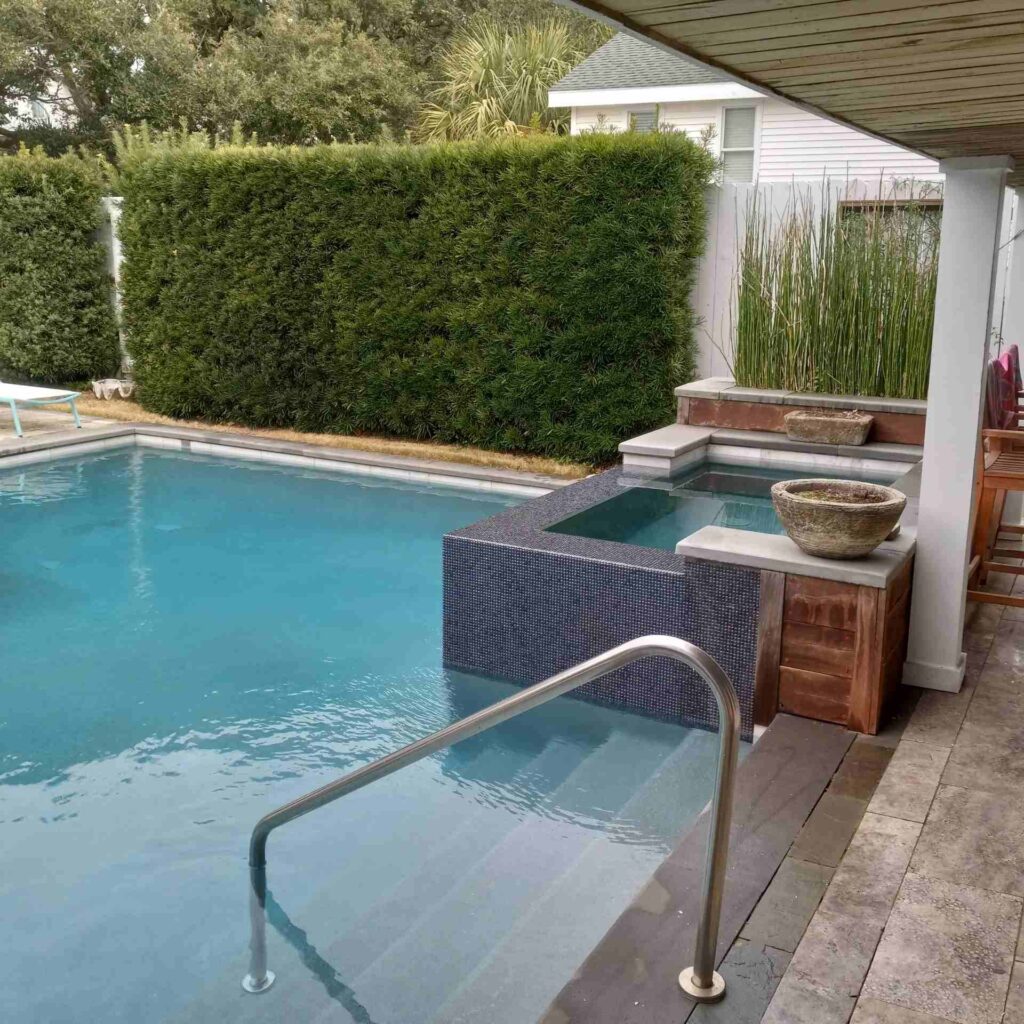How to Maintain a Saltwater Pool vs. a Chlorine Pool

When it comes to pool maintenance, the type of sanitization system you use plays a significant role in the upkeep required. While both saltwater and traditional chlorine pools keep your water clean and safe, they require different approaches to maintenance. In this guide, we’ll break down the key differences and best practices for keeping each type of pool in top condition.
Saltwater Pool Maintenance
Saltwater pools use a salt chlorine generator to convert salt into chlorine, providing a steady flow of sanitizer without the need for traditional chlorine tablets or liquid. While these pools are often considered lower maintenance, they still require regular care.
Key Maintenance Tasks for Saltwater Pools:
Monitor Salt Levels – Keep salt levels between 2,700–3,400 ppm (parts per million) for optimal performance. Test weekly to ensure the generator has enough salt to produce chlorine effectively.
Check the Chlorine Generator – Inspect the salt cell every few months and clean it as needed to prevent calcium buildup, which can reduce efficiency.
Test Water Chemistry – Even though the generator produces chlorine, you still need to balance pH, alkalinity, and calcium hardness. Aim for: pH: 7.2–7.6, alkalinity: 80–120 ppm, and calcium hardness: 200–400 ppm.
Shock Occasionally – While saltwater pools naturally generate chlorine, occasional shocking (every few weeks) helps break down contaminants and prevent algae buildup.
Inspect for Corrosion – Saltwater can be harsh on metal pool components. Regularly check ladders, handrails, and pool equipment for signs of corrosion.
Pros of Saltwater Pools:
– Softer water feel, gentle on skin and eyes
– Fewer harsh chemical odors
– Lower ongoing chemical costs
Cons of Saltwater Pools:
– Higher upfront cost for the salt chlorine generator
– Potential for corrosion on metal fixtures
– Requires occasional salt cell cleaning
Chlorine Pool Maintenance
Traditional chlorine pools require manually adding chlorine in tablet, liquid, or granular form to maintain proper sanitization. These pools are often more affordable to set up but require more frequent monitoring.
Key Maintenance Tasks for Chlorine Pools:
Maintain Proper Chlorine Levels – Keep free chlorine between 1-3 ppm to ensure the water stays sanitized.
Balance Water Chemistry – Like saltwater pools, chlorine pools require regular testing and balancing: pH: 7.2–7.6, alkalinity: 80–120 ppm, and calcium hardness: 200–400 ppm.
Shock Weekly – Shocking your pool weekly or bi-weekly helps break down contaminants, kill bacteria, and prevent algae growth.
Add Stabilizer (Cyanuric Acid) – Chlorine degrades quickly under sunlight. Adding cyanuric acid (CYA) helps protect chlorine and maintain sanitization. Keep levels between 30–50 ppm.
Scrub and Vacuum Regularly – Brushing pool walls and vacuuming debris prevents algae growth and keeps the water looking clean.
Pros of Chlorine Pools:
– Lower initial cost compared to saltwater pools
– Easy to adjust chlorine levels as needed
– No risk of corrosion from salt
Cons of Chlorine Pools:
– Requires frequent chlorine additions and monitoring
– Can cause eye and skin irritation
– Strong chemical odor, especially when chlorine levels are off-balance
Which Pool System Is Right for You?
– Choose a saltwater pool if you want a more natural feel, less frequent chemical handling, and are willing to invest in a salt generator upfront.
– Choose a chlorine pool if you prefer a traditional system with lower initial costs and are comfortable with regular chemical maintenance.
Regardless of the system you choose, regular maintenance is key to keeping your pool water clear, balanced, and safe for swimming.
Need Help Maintaining Your Pool?
At Maritime Pools, we specialize in both saltwater and chlorine pool maintenance. Whether you need routine service, equipment repairs, or a full pool renovation, we’ve got you covered! Contact us at (843) 708-9414 for expert pool care today.